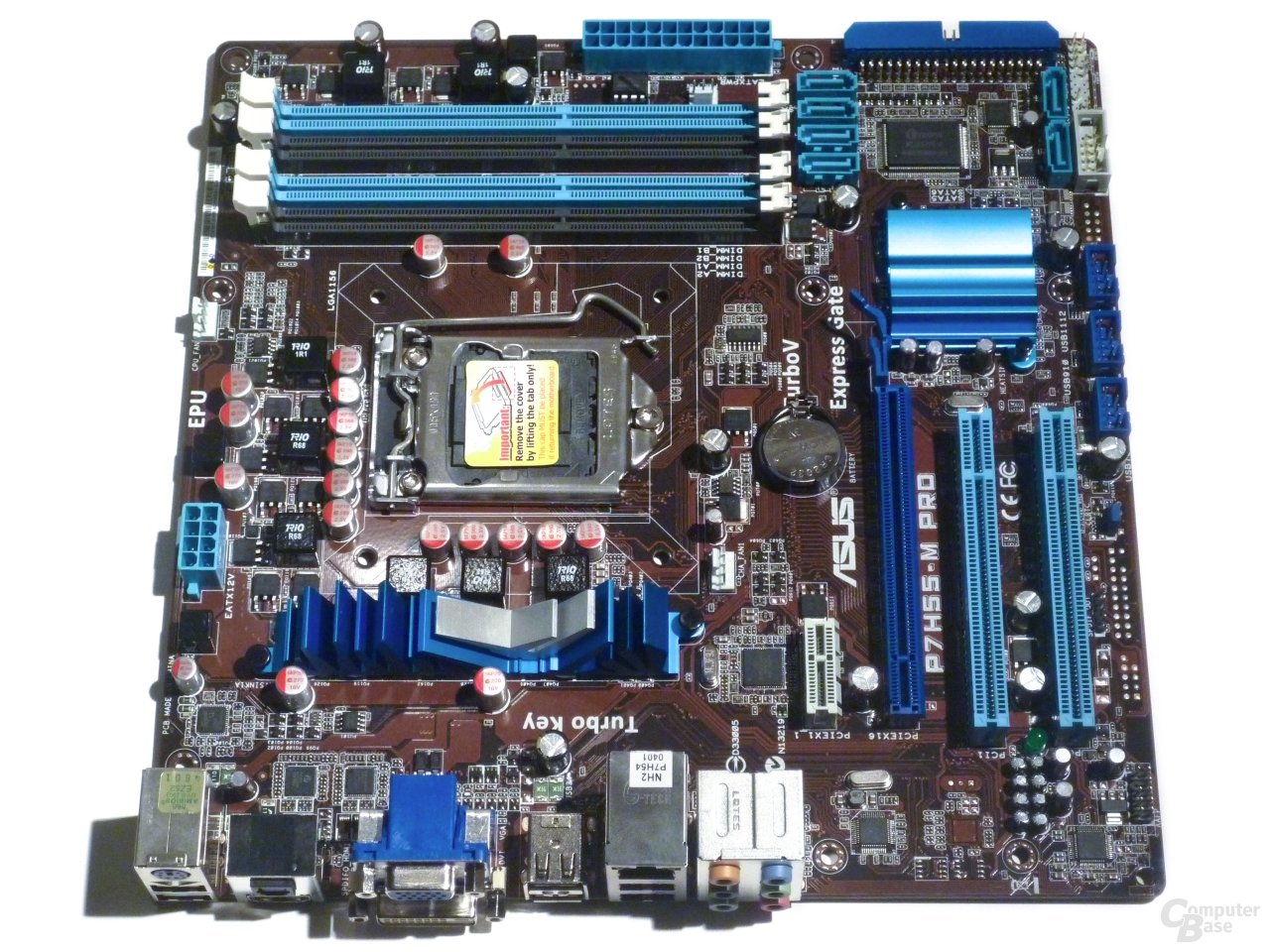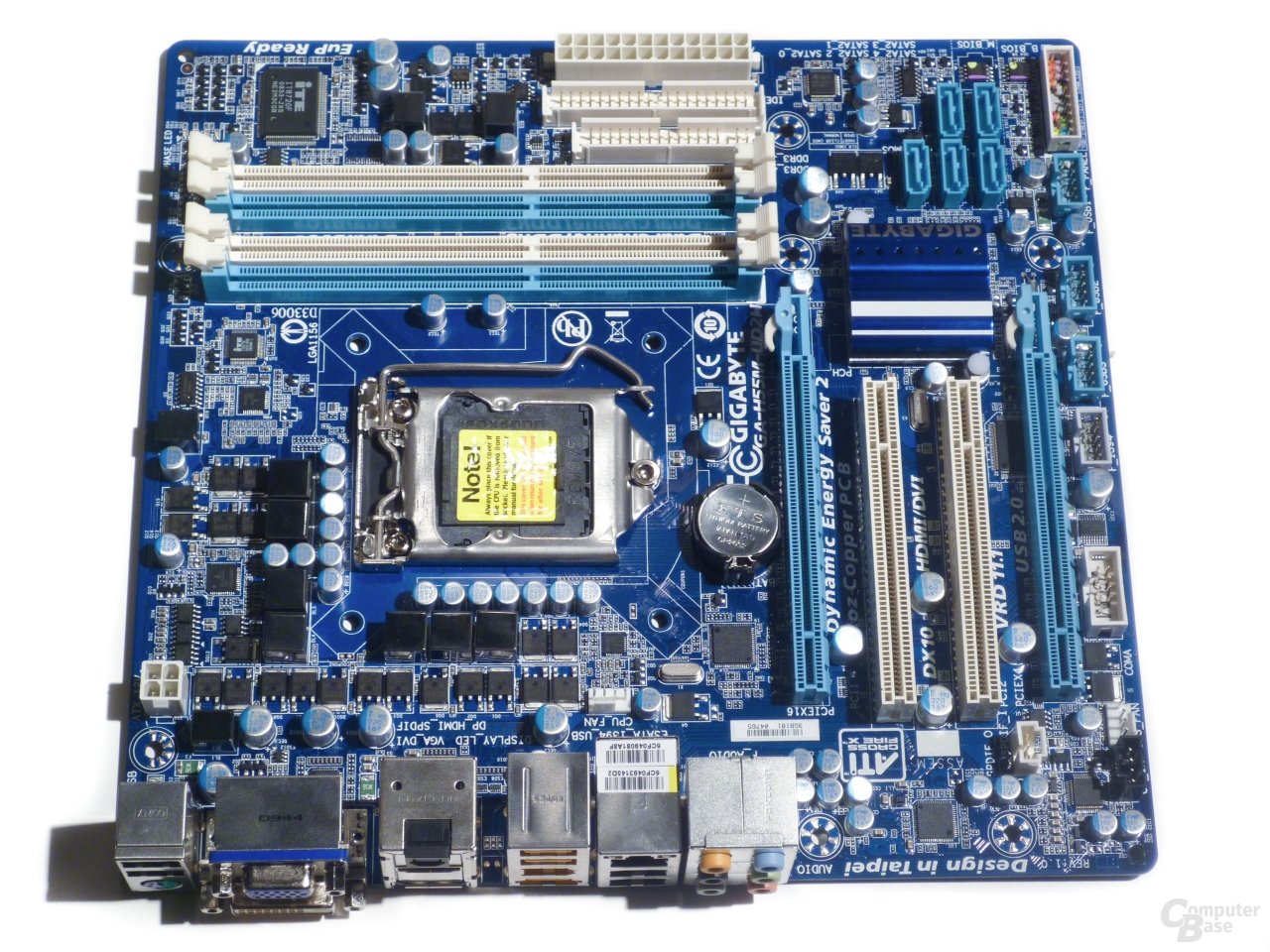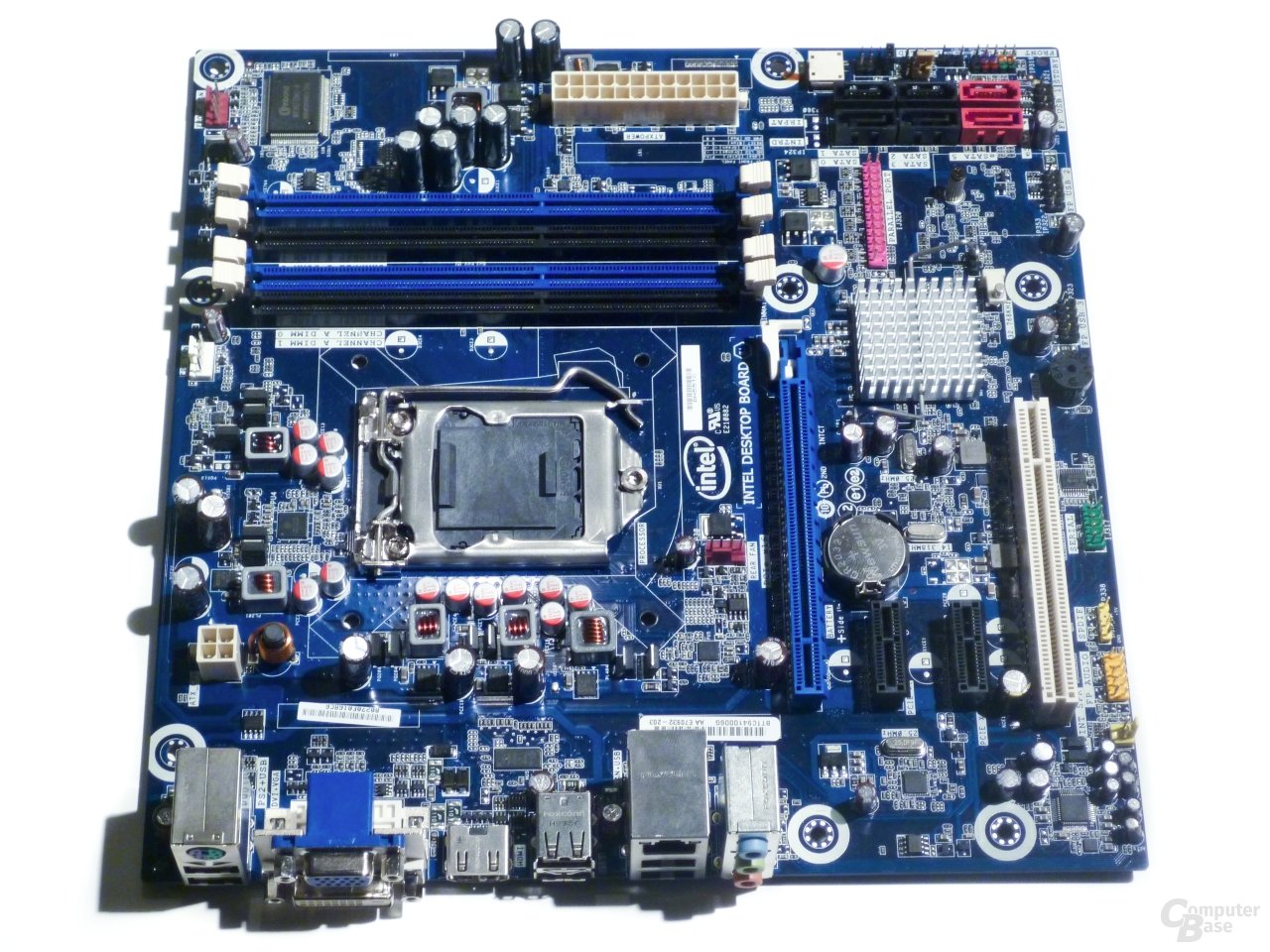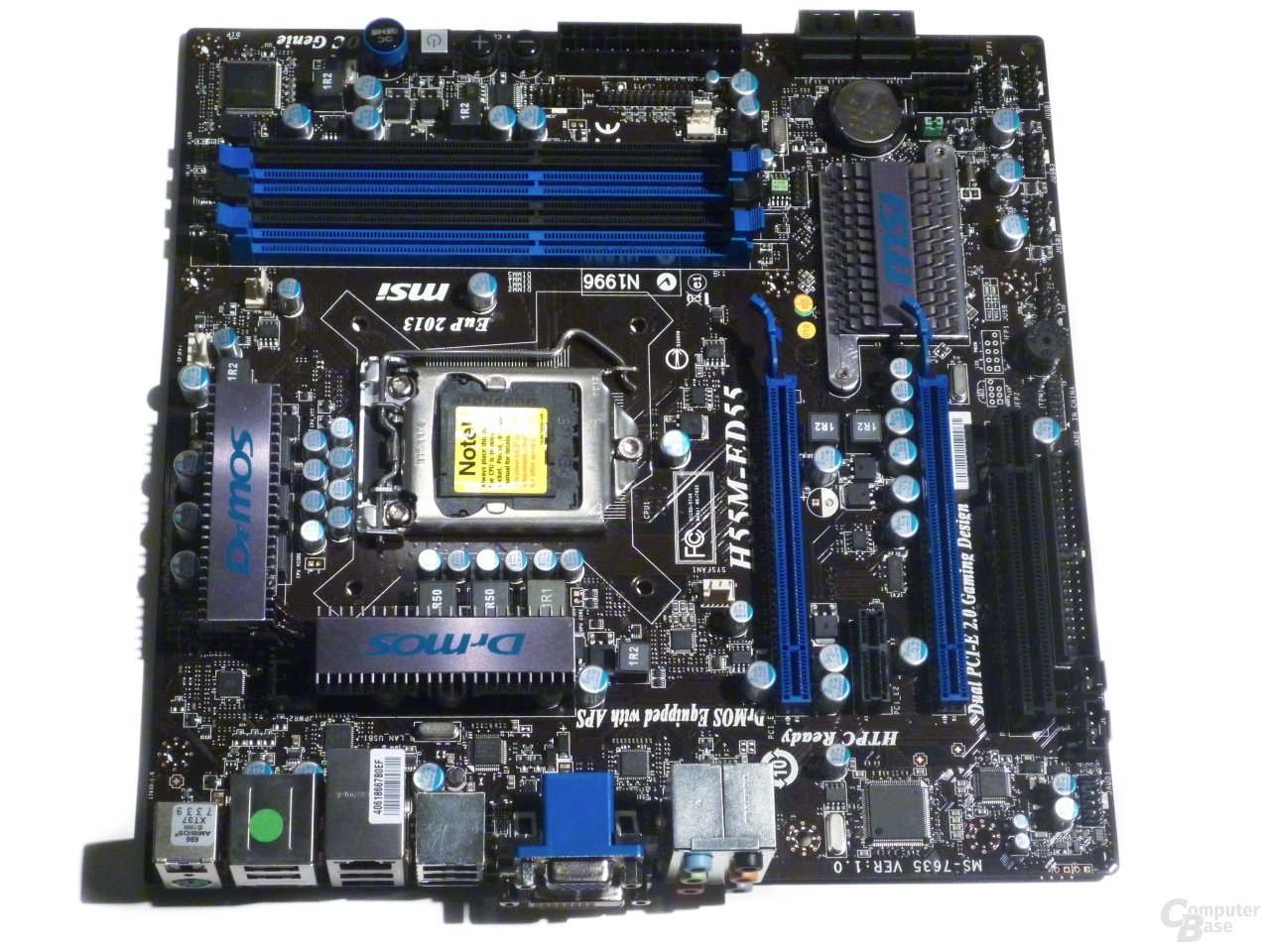Vier H55-Mainboards im µATX-Format im Test: Asus, Gigabyte, Intel und MSI im Vergleich
2/15Die Probanden
Zu Beginn ein kleiner Überblick über die Ausstattung der vier getesteten Mainboards.
| Asus P7H55-M Pro | Gigabyte H55M-UD2H | Intel DH55TC | MSI H55M-ED55 | |
|---|---|---|---|---|
| Bild | ||||
| Format, Sockel | µATX, Sockel 1156 | µATX, Sockel 1156 | µATX, Sockel 1156 | µATX, Sockel 1156 |
| Chipsatz | H55 | H55 | H55 | H55 |
| Ausbaufähigkeit für Prozessoren |
Core i7 870 Core i7 860 (s) Core i5 750 (s) Core i5 670 Core i5 661 Core i5 660 Core i5 650 Core i3 540 Core i3 530 Pentium G6950 |
Core i7 870 Core i7 860 (s) Core i5 750 (s) Core i5 670 Core i5 661 Core i5 660 Core i5 650 Core i3 540 Core i3 530 Pentium G6950 |
Core i7 870 Core i7 860 (s) Core i5 750 (s) Core i5 670 Core i5 661 Core i5 660 Core i5 650 Core i3 540 Core i3 530 Pentium G6950 |
Core i7 870 Core i7 860 (s) Core i5 750 (s) Core i5 670 Core i5 661 Core i5 660 Core i5 650 Core i3 540 Core i3 530 |
| Speicher | 4 Slots max. 16 GByte DDR3 Dual-Channel (2133), 1333, 1066 |
4 Slots max. 16 GByte DDR3 Dual-Channel (1666), 1333, 1066, 800 |
4 Slots max. 16 GByte DDR3 Dual-Channel 1333, 1066 |
4 Slots max. 16 GByte DDR3 Dual-Channel (2133), (2000), (1600), 1333, 1066 |
| PCI-Erweiterungsslots | 1x PCIe 2.0 x16 2x PCIe 2.0 x1 1x PCI |
1x PCIe 2.0 x16 1x PCIe 2.0 x16 @ x4 2x PCI |
1x PCIe 2.0 x16 2x PCIe 2.0 x1 1x PCI |
2x PCIe 2.0 x16 1x PCIe 2.0 x1 1x PCI |
| interne Peripherie- anschlüsse |
3x USB 2.0 6x SATA II 1x Seriell 1x IDE |
3x USB 2.0 5x SATA II 1x IEEE 1394a 1x Seriell 1x IDE 1x FDD |
3x USB 2.0 6x SATA II 1x Seriell 1x Parallel |
3x USB 2.0 6x SATA II 1x IDE |
| Audio | Realtek 8-Channel HD Audio | Realtek ALC 889 | Realtek ALC 888S | Realtek ALC 889 |
| Backpanel | 6x USB 2.0 1x PS/2 (Tastatur) 1x LAN 6x Audio 1x S/PDIF |
6x USB 2.0 1x eSATA 1x IEEE 1394a 1x PS/2 (Combo) 1x LAN 6x Audio 1x S/PDIF |
6x USB 2.0 1x PS/2 (Combo) 1x LAN 3x Audio |
6x USB 2.0 1x eSATA 1x PS/2 (Combo) 1x LAN 6x Audio 1x S/PDIF |
| Grafikausgänge | VGA DVI-D HDMI |
VGA DVI-D HDMI DisplayPort |
VGA DVI-D HDMI |
VGA DVI-D HDMI |
| Lüfter | 1x CPU-Fan 1x Chassis Fan 1x Power Fan |
1x CPU-Fan 1x Chassis Fan |
1x CPU-Fan 2x Chassis Fan |
1x CPU-Fan 3x Chassis Fan |
| Stromversorgung | 24 Pin ATX 8 Pin für CPU |
24 Pin ATX 4 Pin für CPU |
24 Pin ATX 4 Pin für CPU |
24 Pin ATX 4 Pin für CPU |
| Sonstiges | Status-LEDs | Status-LEDs Base-Clock-Control-Buttons |
Einzig MSI nennt auf seiner Kompatibilitätsliste der Prozessoren den Pentium G6950 nicht. Dafür wird gemeinsam mit Asus übertakteter DDR3-Speicher mit bis zu 2133 MHz unterstützt. Löblich ist die Ausstattung des Gigabyte-Boards mit FireWire, eSATA und DisplayPort, wobei ein Lüfteranschluss mehr sicher wünschenswert wäre.
Keiner der Testkandidaten wurde vom Hersteller mit einem extra Controller für USB 3.0 versorgt. Trotz ihrer Größe müssen die Boards von Gigabyte und MSI hingegen nicht auf kleine optische Highlights wie Status-LEDs verzichten. Größere Status-Indikatoren wie ein POST-Code LED-Display bietet keiner der Kandidaten.




